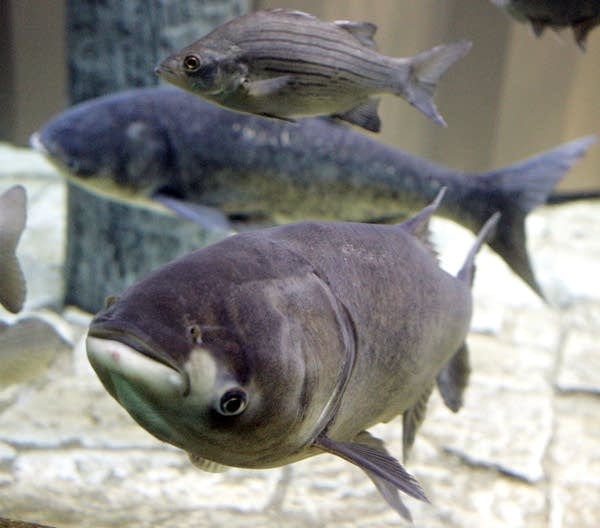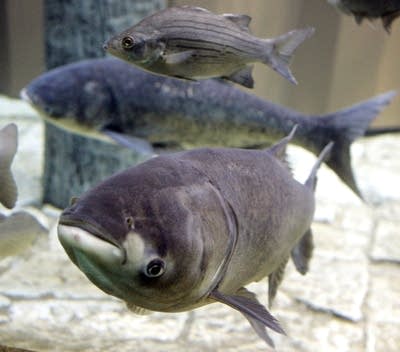Asian carp DNA found in Chicago River channel
Go Deeper.
Create an account or log in to save stories.
Like this?
Thanks for liking this story! We have added it to a list of your favorite stories.

By JOHN FLESHER
AP Environmental Writer
TRAVERSE CITY, Mich. (AP) — Another search for Asian carp will take place in Chicago-area waters next week following more discoveries of their genetic material close to Lake Michigan, officials said Tuesday.
DNA from silver carp, one of the Asian species threatening to invade the Great Lakes and compete with native fish for food, showed up in samples taken from a waterway called the North Shore Channel between June and September. Of 171 samples collected, 17 tested positive, as did 17 of 57 samples from the nearby Chicago River taken in September.
Scientists don't know whether so-called environmental DNA, or "eDNA," signals the presence of live fish or could have come from another source, such as bilge water from ships or feces from fish-eating birds. But government policy requires an intensive search whenever three consecutive rounds of sampling yield positive results.
Turn Up Your Support
MPR News helps you turn down the noise and build shared understanding. Turn up your support for this public resource and keep trusted journalism accessible to all.
"This is part of the ... control strategy that includes continuing aggressive monitoring to keep Asian carp out of the Great Lakes, developing cutting edge control technologies, and refining the use of eDNA," said John Goss, who coordinates the Obama administration's Asian carp program through the White House Council on Environmental Quality.
The Oct. 16-19 search will cover the North Shore Channel and a 6-mile stretch of the Chicago River beginning near the downtown Chicago lock. Commercial fishing crews will be deployed and teams will place nets in the waters. Government workers will use electric stunning devices to catch fish in shoreline areas and chase others toward the nets.
The hunt will be the third triggered by three consecutive eDNA sample sets. The others were in Lake Calumet, another Chicago-area waterway — one in 2011 and one this year. Neither turned up any Asian carp.
Just one actual carp has been found beyond an electric barrier 37 miles from the city designed to halt their advance. That happened in 2010.
While federal officials contend the electric barrier and other measures to protect the Great Lakes from Asian carp are working well, critics say they're inadequate. Several independent studies have called for permanently separating the lakes from the carp-infested Mississippi River basin by putting structures in the Chicago waterways.
That's the course sought in a federal lawsuit filed by five states — Michigan, Wisconsin, Minnesota, Ohio and Pennsylvania — and the Grand Traverse Band of Ottawa and Chippewa Indians in Michigan.
Michigan Attorney General Bill Schuette said Tuesday that the recent eDNA discoveries were further incentive to continue the lawsuit. More than 80 positive samples have been recorded this year, he said.
Federal attorneys have asked U.S. District Judge John Tharp Jr. to dismiss the lawsuit, noting that Congress passed a law this year ordering the Army Corps of Engineers to complete a study by January 2014 of how to close pathways for invasive species between the Great Lakes and the Mississippi basin.
The Corps said this month it will release a report with options by the end of next year but will need more study to select the best one.
"Asian carp are knocking at the front door of the Great Lakes, and we cannot afford to wait on a federal government that fails to act," Schuette said.



